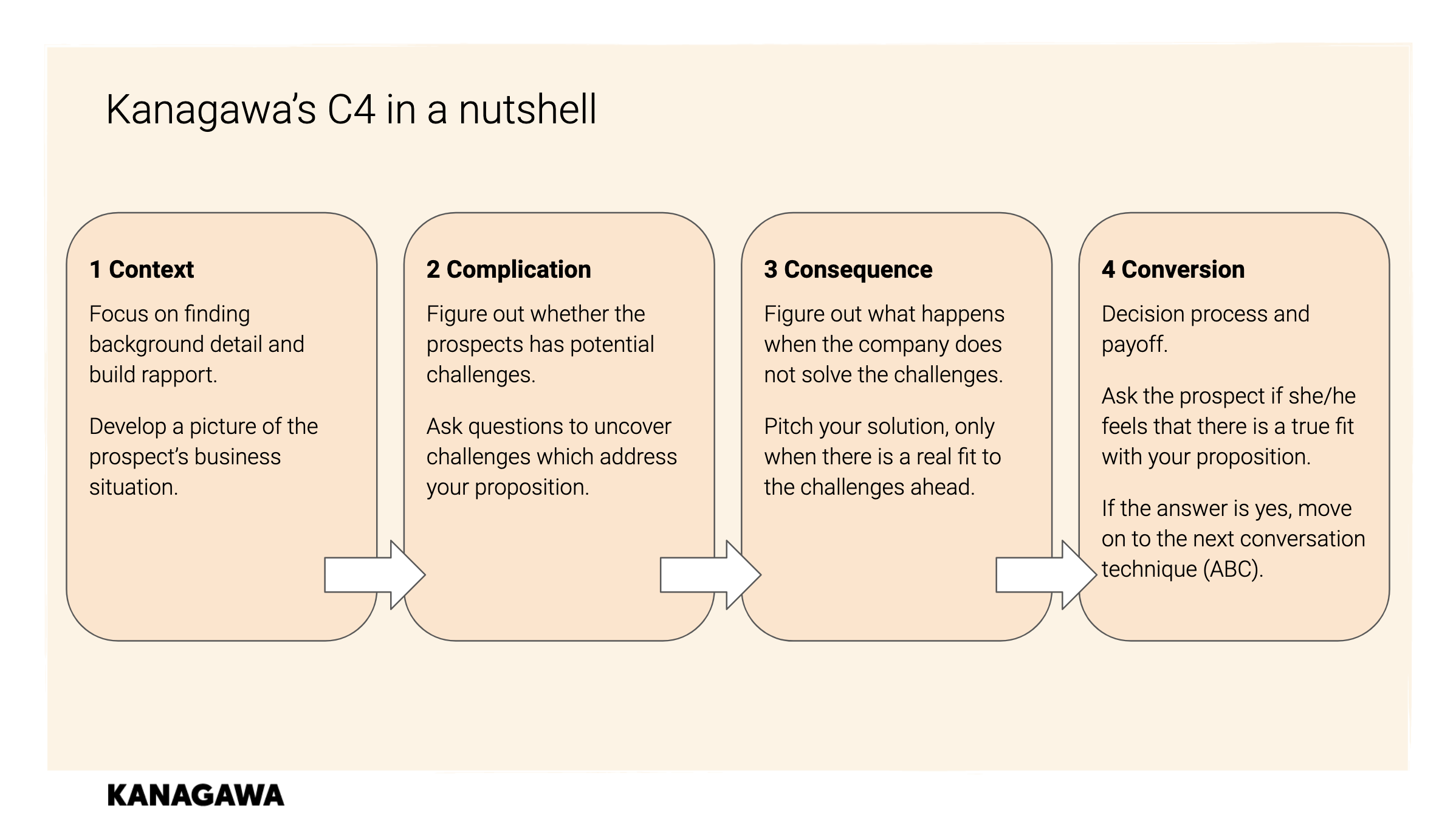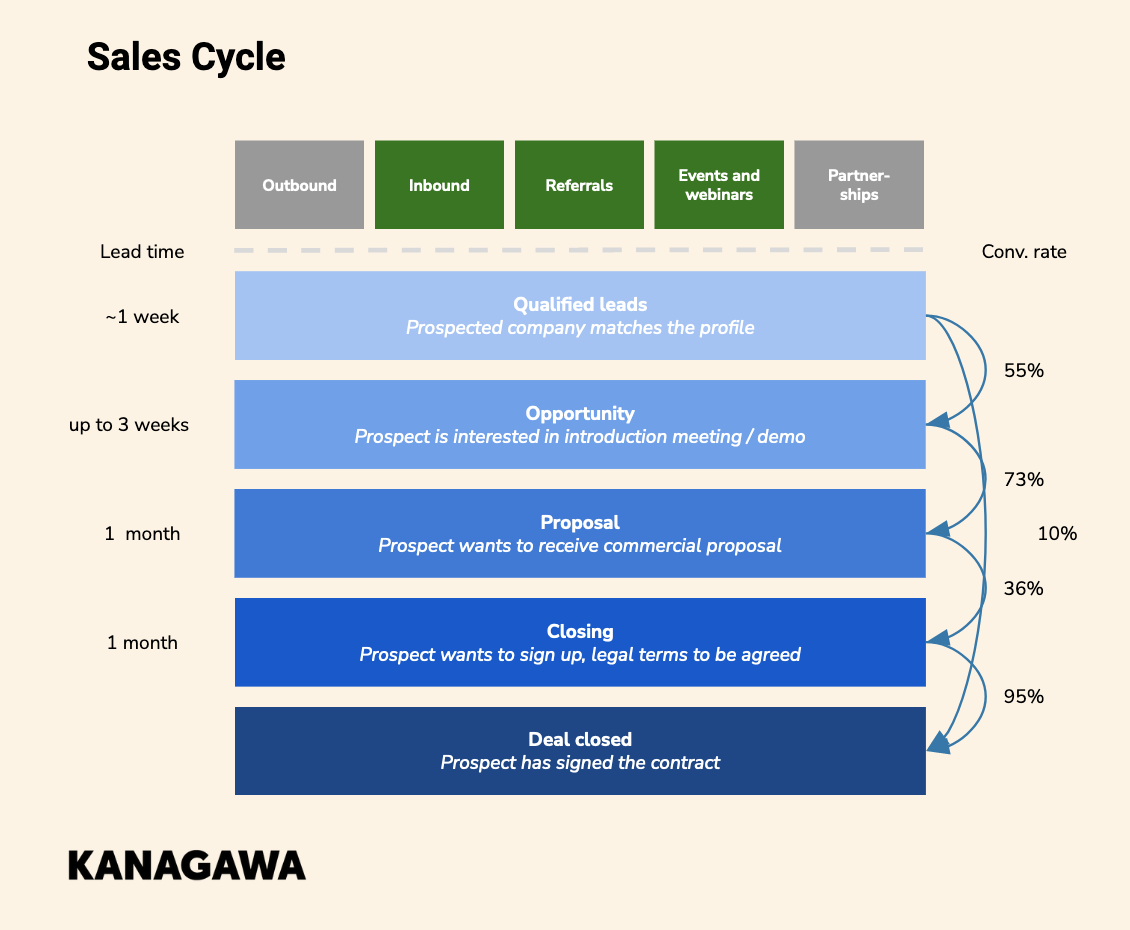When you’re running a B2B SaaS company, your sales cycle is the lifeblood of your business. If you don’t have a clear and effective process, you’re not just risking your growth, but also your entire existence.
As per studies and surveys, the average sales cycle for companies in the B2B industry is between six to nine months. While this is fine for Enterprise sales, especially for governmental institutions, it is way too long for prospects in the SoHo/SME or even Mid-Corporate markets.
As a benchmark, we at Kanagawa, aim for approx 100 days; it’s what we feel comfortable with and what we think is acceptable for most companies.
But the fact remains that most of the time, even when companies have great products and strong processes in place, their sales cycles are still far too long.
Achieving a short sales cycle is both an art and science. It requires a clear understanding of how to optimize your sales process, as well as how to identify the right metrics to measure your progress.
We have had the privilege to work with numerous B2B SaaS companies, helping them to optimize their marketing and sales efforts. Using industry best practices and benchmarks, we have helped them shorten the sales cycle by creating processes that are well defined and streamlined enough to follow as well as to measure success.
Why are B2B sales cycles so long?
If you’re a B2B sales rep, you’ve probably noticed that the sales cycle for most target markets can be pretty long.
Sometimes it’s because your prospect is just not ready to buy. Other times, it’s because your company has been sending out proposals without clearly establishing the needs of the whole buying committee or even identifying a real need for your product.
The main reason for long B2B sales cycles is twofold:
- The lack of a clearly defined sales process, including gates and metrics which is adhered to. Sales representatives don’t have clear expectations on what kind of leads they should be pursuing or what the right time is to make a pitch.
- Sales representatives are too optimistic and send their proposals too early without any commitment (signs that prospects are really interested in buying). Sales Reps often send proposals to prospects who aren’t even ready yet! As a result, there’s a lot of frustration because it’s hard for them to stay motivated when there’s no real response from prospects after sending these proposals.
So the question we often answer is: how can we shorten our sales cycle?
How to Significantly Shorten Your B2B Sales Process?
The solution is relatively simple: implement a simple sales process that describes:
- The steps which need to be followed by every sales representative.
- Clear gates which describe buying indications to be met BEFORE going to the next step in the process.
- Metrics to measure and steer progress.
This will help to eliminate unnecessary steps and add clarity about who does what when it comes to closing deals. In addition, having clearly defined metrics will help you stay on top of your pipeline management efforts and make sure you’re not missing out on potential opportunities.
A structured process helps sales reps identify prospects who are looking for solutions from companies like yours and helps them build relationships with these qualified prospects over time so that when it comes time to make an offer, you will have built up trust that makes your proposal more likely to be accepted.
It comes down to whether or not you can shorten the sales cycle. Moreover, the longer the sales process, the less chance you have of closing the deal.
So, how can you shorten the B2B sales process?
It’s simple: better structure your sales process and stick to it.
It’s no secret that the B2B sales process can be time-consuming and difficult to navigate. But there is a way to significantly shorten it—and it starts with understanding how your prospect thinks.
We developed our own sales approach called Kanagawa’s C4 Sales Methodology, which helps Sales Reps to structure their sales actions in especially the early stages of the sales cycle. C4 Sales helps you (as a Sales Rep) to structure the early stages of your sales process by identifying the real customer challenges together with the prospects. The four stages of C4 Sales:

As a result you know that there is a challenge that is big enough and urgent enough to require a solution. This leads to a situation in which Sales Reps should be better equipped to bring out the right proposal (based on the challenge discovered) and get it accepted (as the challenge was discovered together with the prospect, preferably with the right DMU members).
How we help B2B companies
Here is a 4 step process of how we help B2B companies start and scale up their sales processes:
- We swiftly analyse the sales organisation (zoom in to the strategy, structure, process, resources, and skills) and focus on the current lead time, conversion rate, and sales velocity.
- We identify the most obvious bottlenecks which lead to subpar metrics.
- We restructure the sales process by primarily:
-
- Bringing the sales process back to five simple steps: lead qualification-, opportunity-, proposal-, contracting- and closing phase (note: often we come across sales processes of over 9 phases);
- Building in extra gates before a sales rep can move to the next phase. For example, only send a proposal when you have a concrete commitment for discussing the proposal with the right members of the DMU (Decision Making Unit).
-
- Train the sales team in the C4 selling methodology and ensure this is adhered to in the new sales process.

Final thoughts
Your sales processes are the cornerstone of your business.
The B2B sales process has many moving parts and can be a struggle for even the most seasoned salespeople. If you’re not closing deals at the right time, it doesn’t matter how great your product is or how much you’ve invested in marketing—you’re not making money.
Significantly shortening your B2B sales process doesn’t have to be a lengthy, arduous process. No single solution works for every company. It’s a series of smaller changes that majorly impact how soon a prospect turns into a closed deal.
The key is figuring out what’s holding back your sales team and addressing it head-on.
In this guide, we’ve outlined some of the most common barriers to shorter sales cycles, as well as solutions for overcoming them. We hope this helps you get started on the path toward shorter, more profitable deals.
In our next blog post, we’ll talk about how you can increase your conversion rates.
Read more about growth in our other articles, here.




